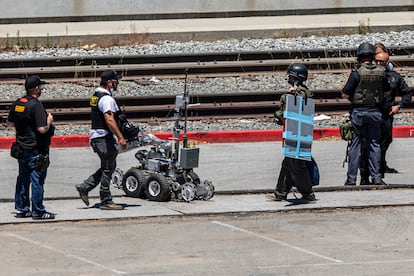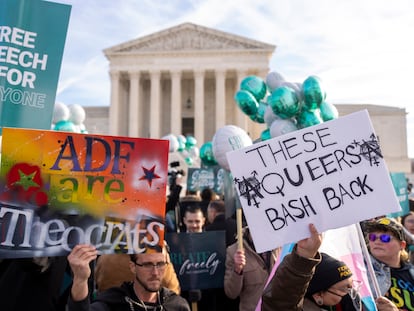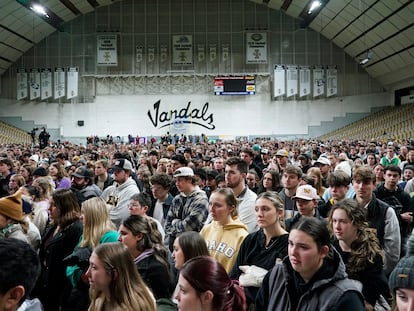San Francisco reverses decision to allow use of police robots to deliver lethal force
County Board of Supervisors backtracks following public backlash and concerns about ‘the precedent it sets for other cities without as strong a commitment to police accountability’


The San Francisco County Board of Supervisors has backtracked on an initiative that would have allowed police to use robots to deliver lethal force. The measure was approved by the board by an 8-3 majority in November, causing an immediate backlash among residents. After several days of protests the supervisors reversed their decision and expressly banned law enforcement from employing the machines, which have already been deployed in some instances, to kill suspects involved in shootings, acts of terrorist acts and bomb threats.
Three years ago, the 11 supervisors who make up the board in a city considered the birthplace of technology became the first in the United States to ban local authorities from using face recognition software. As such, it came as a surprise that the same board was inclined to authorize the use of robots to administer lethal force in extreme cases. Some supervisors criticized the measure and aired their concern that the regulation could result in an increase in cases of police abuse. The majority prevailed, but the decision required at least one of the two highest-ranking officers in the San Francisco Police Department (SFPD) to authorize the lethal use of the machines.
The progressive minority faction who voted against the measure were not to be deterred and on Monday threatened to launch a petition to force a referendum to overturn the decision. “This policy has no place in San Francisco,” board president Shamann Walton said during a protest event staged outside City Hall.
Concerns among the supervisors, in addition to the open rejection of non-governmental organizations against police abuse, caused other members of the board to reconsider their stance. Supervisor Gordon Mar was quoted by local press saying that he had become “increasingly uncomfortable” about the measure and voted against it Tuesday, citing concerns over “the precedent it sets for other cities without as strong a commitment to police accountability.”
Supervisor Dean Preston, who voted against the measure, said Tuesday the efforts of the local government should be focused on reducing the use of force by police and “not giving them new tools to kill people.” Some experts have observed that law enforcement officers may be inclined to use the robot option ahead of exploring other possibilities.
The SFPD is currently facing several referrals for abuse of authority. Among these are around 100 related to suspicious shootings carried out by uniformed officers, some of these motivated by race, according to the Department of Justice. Some civil society watchdogs have stated that a Black person is five times more likely to be stopped and searched in San Francisco than a white citizen: the use of force against African-Americans is 13 times higher.
The SFPD has 17 robots that can be deployed to neutralize threats but only 12 are operational. They are used in tasks where police officers are at risk, for example, in the apprehension of armed criminals and the search of suspicious properties, or when bombs are involved.
In July 2016, the Dallas Police Department became the first force in the country to use a robot to kill a suspect. After hours of tense negotiation, an armed man opened fire and killed five police officers. “We saw no other option but to use our bomb robot and place a device on its extension for it to detonate where the suspect was,” said Dallas Police Chief David Brown at the time.
Sign up for our weekly newsletter to get more English-language news coverage from EL PAÍS USA Edition
Tu suscripción se está usando en otro dispositivo
¿Quieres añadir otro usuario a tu suscripción?
Si continúas leyendo en este dispositivo, no se podrá leer en el otro.
FlechaTu suscripción se está usando en otro dispositivo y solo puedes acceder a EL PAÍS desde un dispositivo a la vez.
Si quieres compartir tu cuenta, cambia tu suscripción a la modalidad Premium, así podrás añadir otro usuario. Cada uno accederá con su propia cuenta de email, lo que os permitirá personalizar vuestra experiencia en EL PAÍS.
¿Tienes una suscripción de empresa? Accede aquí para contratar más cuentas.
En el caso de no saber quién está usando tu cuenta, te recomendamos cambiar tu contraseña aquí.
Si decides continuar compartiendo tu cuenta, este mensaje se mostrará en tu dispositivo y en el de la otra persona que está usando tu cuenta de forma indefinida, afectando a tu experiencia de lectura. Puedes consultar aquí los términos y condiciones de la suscripción digital.
More information
Archived In
Últimas noticias
NASA discovers Titan doesn’t have an ocean, but a ‘slushy ice layer’ that increases possibility of life
Innocence lost in the forest of the child soldiers: ‘Each leader of the armed group had his girls’
‘Fallout’ or how the world’s largest company turned an anti-capitalist apocalyptic Western into a phenomenon
From inflation to defending migrants: Eileen Higgins and Zohran Mamdani inaugurate the new Democratic resistance against Trump
Most viewed
- ‘El Limones’ and the growing union disguise of Mexican organized crime
- Christian Louboutin: ‘Young people don’t want to be like their parents. And if their parents wear sneakers, they’re going to look for something else’
- The low-cost creative revolution: How technology is making art accessible to everyone
- ‘We are dying’: Cuba sinks into a health crisis amid medicine shortages and misdiagnosis
- A mountaineer, accused of manslaughter for the death of his partner during a climb: He silenced his phone and refused a helicopter rescue










































